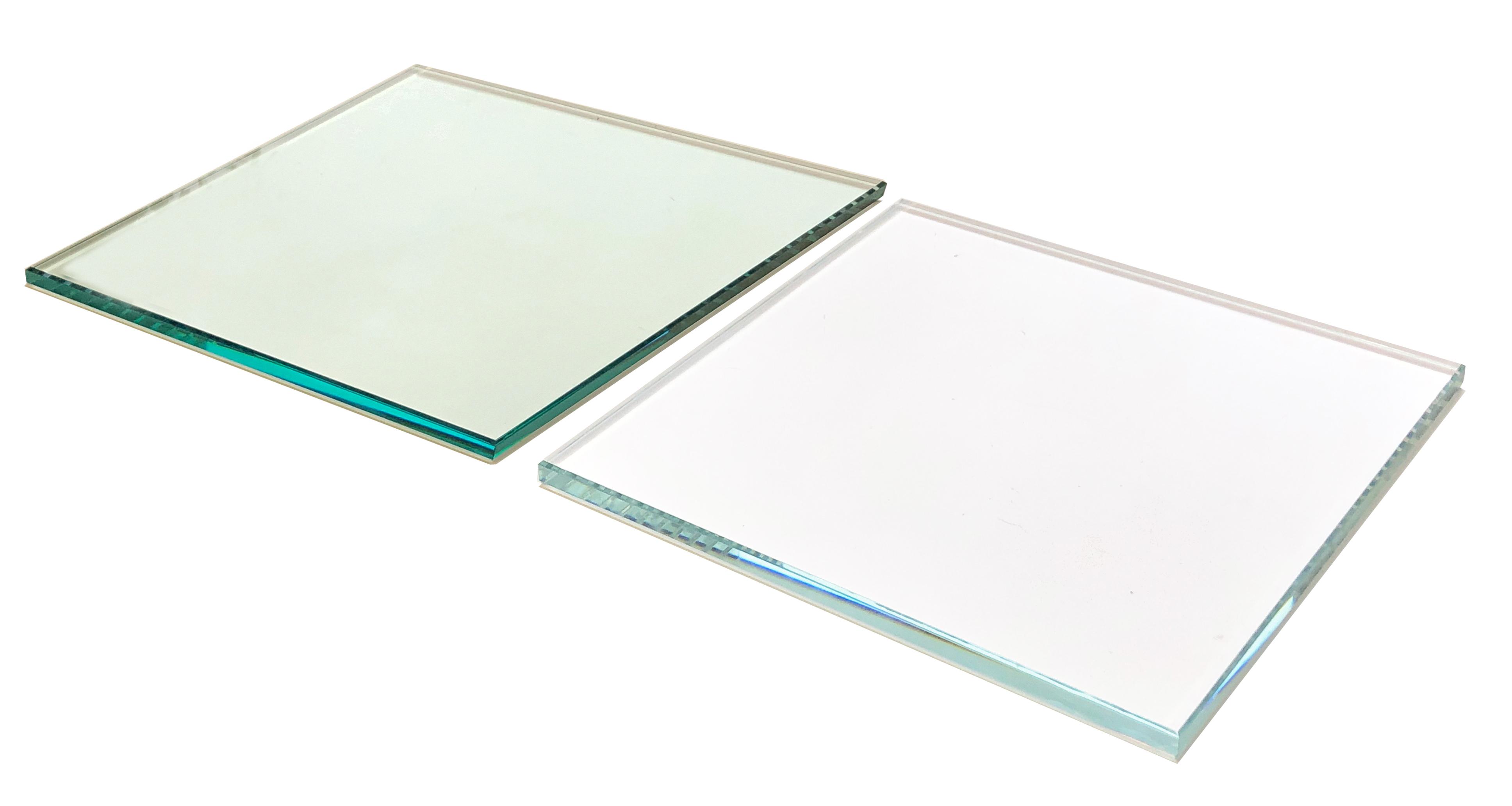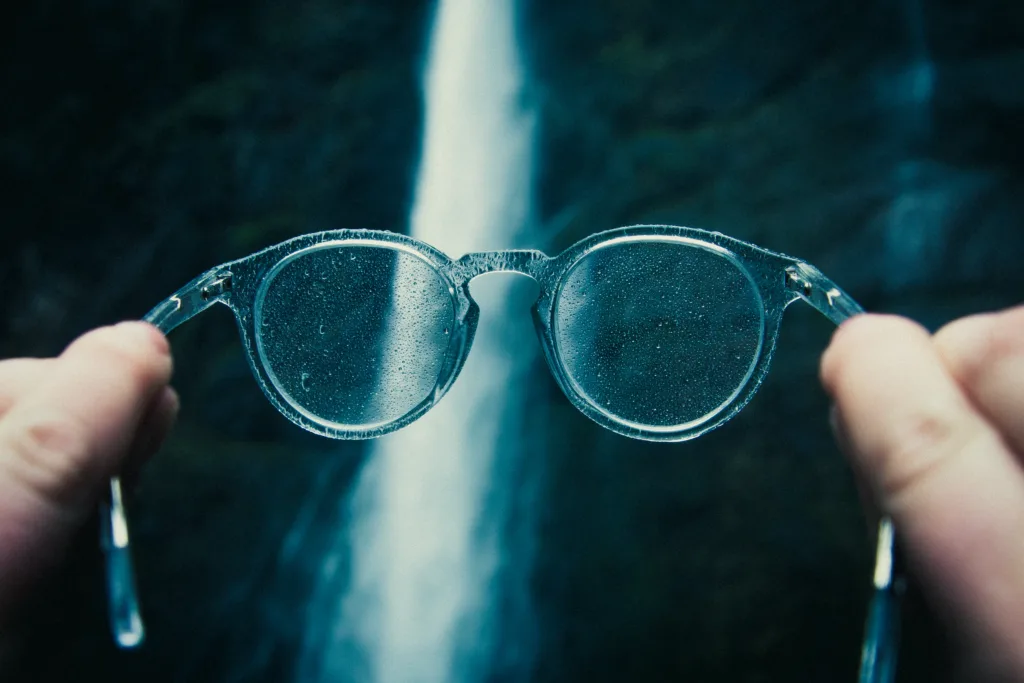Clear is not typically considered a color in the same way that red, blue, or green are. Rather, clear is a property of a material that dscribes its ability to allow light to pass through it without scattering or absorbing it. Transparent materials appear clear, with the overall appearance of one color, or any combination leading up to a brilliant spectrum of every color.
The opposite property of translucency is opacity. Materials that are opaque do not allow light to pass through them at all. Opaque materials can be any color, but they appear solid and block out light.
Clear just means it’s transparent. Glass can be clear and green. A ruby can be clear and red. However, “colorless” means it has no color. All normal clear glass has a light green hue to it, caused by the iron content in the glass. Iron oxide comes from the sand or cask that the glass was melted in. The higher the iron levels, the greener the hue. The lower the iron level, the clearer it’ll be.
Some consider white to be a color, because white light comprises all hues on the visible light spectrum. And many do consider black to be a color, because you combine other pigments to create it on paper. But in a technical sense, black and white are not colors, they’re shades. They augment colors.
Whether clear is considered a color or not is up for debate. Clear is a property of a material that allows light to pass through it, while opaque materials block out light. Clear materials can have a hue or be colorless, and whether or not they are considered a color depends on the context in which they are being discussed.
Is Transparency a Clear Color?
Transparent is not a color, but a property of materials that allows light to pass through them. Transparent materials appear clear, without any color of their own, and they can transmit or scatter light to varying degrees. This means that when we look through a transparent material, we see objects on the other side as if there were no barrier at all.
The clarity of a transparent material depends on its composition, thickness, and surface quality. For example, glass is a commonly used transparent material that can be very clear or have a slightly greenish or bluish tint, depending on the type of glass and its thickness. Plastic, on the other hand, can be made clear or colored to various degrees, depending on the additives used in its production.
It’s important to note that transparency is not the same as translucency or opacity. Translucent materials allow some light to pass through them, but they also scatter and diffuse the light so that objects on the other side are not clearly visible. Opacity, on the other hand, describes materials that do not allow any light to pass through them, and therefre block the view of objects on the other side.
Transparent is not a color, but rather a property of materials that allows light to pass through them, making objects on the other side visible. The clarity of a transparent material depends on its composition, thickness, and surface quality, and it should not be confused with translucency or opacity.

Source: bascoshowerdoor.com
What Does ‘Clear a Color’ Mean?
When something is described as “clear,” it means that it is transparent and does not have any visible color. Clear objects allow light to pass through them without any interference, resulting in a see-through appearance. This can be seen in materials such as glass or plastic.
On the other hand, “colorless” is a term used to describe an object that has no color at all. It is completely transparent and appears as if it is not even there. This is oftn used to describe materials such as water or air.
It is important to note that there are many objects that can be both clear and colored. For example, a piece of green-tinted glass can be clear enough to see through, but still have a noticeable green hue. Similarly, a red ruby can be clear enough to allow light to pass through it, but still have a distinct red color.
The term “clear” refers to an object that is transparent and has no visible color, while “colorless” describes an object that is completely transparent and appears as if it has no color at all.
Is Clear Glass a Color?
Clear glass is not considered a color, but it does have a slight green hue. This green hue is caused by the presence of iron oxide in the glass, whih is derived from the sand or cask used during the melting process. The amount of iron oxide present in the glass determines the intensity of the green hue. Therefore, the higher the iron content, the more pronounced the green hue will be, and the lower the iron content, the clearer the glass will appear. It is important to note that this green hue is not considered a color as it is not intentionally added to the glass to produce a specific shade. Rather, it is a natural byproduct of the glassmaking process.
Is White a Color?
In the world of color theory, the answer to the question “Is white a color?” is somewhat complex. On one hand, white can be considered a color because it is the result of combining all of the colors on the visible light spectrum together. When you see a white object, it is reflecting all of the colors back to your eyes.
However, from a technical perspective, white is not really a color at all. This is because white light is actually the absence of color, as it contains all wavelengths of light equally. In other words, white is the absence of any specific color.
So, depending on how you look at it, white can either be considered a color or not. It is certainly an important element in color theory, as it is used to create tints and shades of other colors. When you add white to a color, you create a lighter, more pastel version of that color. Conversely, when you add black to a color, you create a darker, more muted version of that color.
While the answer to the question “Is white a color?” is somewhat subjective, it is generally agreed that white is not technically a color, but raher a shade or tint that is used to augment other colors.

Conclusion
The question of whether clear is a color is a matter of perspective and context. Technically, clear is not a color as it refers to the absence of color and allows all light to pass through without obstruction. However, in everyday language, clear is often used to describe a substance that appears colorless or transparent, such as clear glass or plastic. Additionally, the presence of impurities or additives can give a clear material a slight hue or tint. Ultimately, whether clear is considered a color or not depends on the specific application and the individual’s interpretation.
